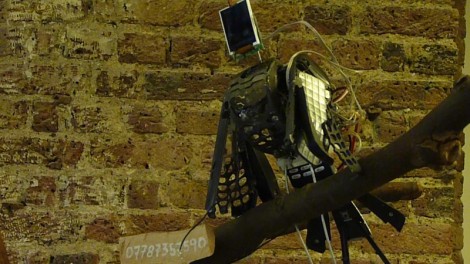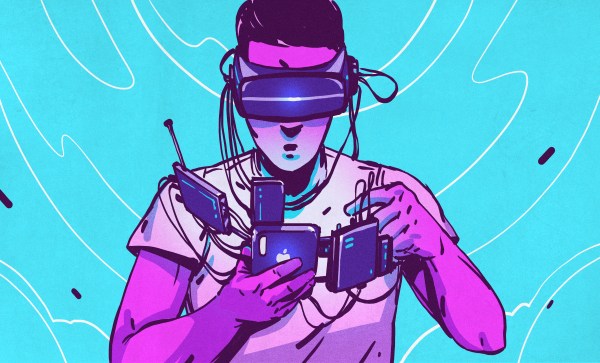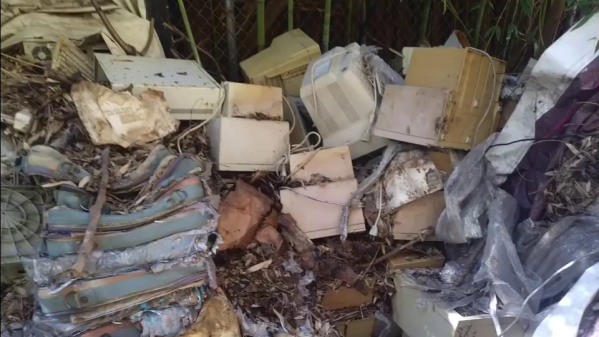The first solar panels may have rolled out of Bell Labs in the 1950s, with major press around their inconsistent and patchy adoption in the decades that followed, but despite the fanfare they were not been able to compete on a price per kilowatt compared to other methods of power generation until much more recently. Since then the amount of solar farms has increased exponentially, and while generating energy from the sun is much cleaner than most other methods of energy production and contributes no greenhouse gasses in the process there are some concerns with disposal of solar panels as they reach the end of their 30-year lifespan. Some companies are planning on making money on recycling these old modules rather than letting them be landfilled. Continue reading “There’s Cash In Them Old Solar Panels”
landfill5 Articles
Buzzword Bingo Bitcoin Burial Burrowing Blueprint Balked At By Bureaucracy
Many of you will at some time have heard the unfortunate tale of [James Howells], a Welsh IT worker who threw away a hard drive containing 8,000 Bitcoin back in 2013. Over the years he’s hatched various schemes to persuade his local council to let him dig up the landfill where it’s reputed to be buried, and every time he’s been rebuffed. Despite the fall in the price of cryptocurrencies he’s back with another. With the added spice of AI and robot dogs alongside the cryptocurrency angle, it reads like a buzzword bingo card and adds a whole new meaning to “Bitcoin mining”. Seemingly despite generous offers the local council are still not keen on letting him dig for the drive.
We can’t help feeling sorry for the guy — after all, in the early days of cryptocurrency the coins were a worthless curiosity so it’s not impossible there are readers with similar stories. But we’re curious how well the drive will have survived its 9-year interment even if the AI robot arm and robot dog security would ensure its recovery. With that much cash at stake the best in the data recovery business will no doubt be unleashed on whatever remains they might recover, but in the unfriendly environment of a festering landfill we’d be curious as to whether chemical action might have corroded the platters to the point at which nothing might remain. Wales has a high rainfall unlike the American southwest, so we doubt it would survive as well as an Atari cartridge.
Meanwhile, tell us your cryptocurrency might-have-beens in the comments.
Landfill Site sign by Geographer, CC BY-SA 2.0.
Finally, A Use For Old Cellphones
In what is now a three-year long search, I’ve finally found the perfect use for an old cellphone. And with it, the answer to a burning question: Why aren’t we hacking cellphones?
First, the application. The Octo4a project lets you use an old Android phone as a 3D printer server, web interface, and even time-lapse camera to make those nice movies where the print seems to grow up out of nothing before your eyes. It’s the perfect application for an old phone, making use of the memory, WiFi, graphics capabilities, and even the touch-screen if you want local control of your prints.
Connecting to the phone was the main hurdle that I’ve always seen in developing for cellphone projects, because I have robotics applications in mind. But Octo4a gets around this with low or no effort. Most 3D printers are designed to run on USB anyway, so connecting it to the phone is as simple as buying a USB OTG cable. With the USB port taken over, powering the phone long-run becomes a tiny problem, which can be solved with a Y-cable or a little solder. Keep the OS from going to sleep, somehow, and it’s problem solved!
But here’s why this isn’t a solution, and it points out the deeper problem with cellphone hacking that many pointed out in the comments three years ago. Octoprint is written in Python, and because of this is very easy to write extensions for and to hack on, if that’s your thing. When I first saw Octo4a, I thought “oh great, a working Android Python port”. Then I went to dig into the code.
Octo4a is written in Kotlin and uses the Gradle framework. It’s a complete port of Octoprint, not just to a different platform, but to a different programming language and to an almost entirely different programming paradigm. My hat is off to [feelfreelinux] for doing it, but my guess is that the community of other people fluent enough in Kotlin and Python to help port across upstream changes in Octoprint is a lot smaller than the community of Python programmers would have been. Octo4a is a great project, but it’s not a walk in the park to develop on it.
So all of you who wrote in the comments to my previous piece that it’s the Android software ecosystem that’s preventing phone reuse, well here’s the exception that proves your rule! A dedicated and talented, multi-lingual developer community could pull it off, but the hurdle is so high that few will rise to it.
Anyway, thanks [Feelfree Filip] for your great work! I’ll be putting this on my old S4.
Disgusting Apple II Monitors Live Again
[The 8-Bit Guy] recently went to check out a stash of old Apple II Color monitors which had been sitting outside in a trash pile for 20 years, and decided to bring one home to restore. As you can see from the lead photo, they were dirty — really dirty. Surprisingly, the team of volunteers who discovered these monitors had fired them up, and every one of them works to some extent or another.

Check out the video below as he cleans up this filthy monitor and starts troubleshooting. You’ll chuckle aloud when he turns the circuit board over to desolder a mysterious diode, and when he flips the board back over, the diode has disappeared (it actually disintegrated into dust on his lab bench). For the curious, one commenter on YouTube found that it was a glass passivated and encapsulated fast recovery diode called a V19. There’s going to be a part 2, and we have every confidence that [The 8-Bit Guy] will succeed and soon add a shiny, like-new monitor to his collection.
If you’re a collector of old monitors, this demonstrates that they can survive quite a bit of abuse and exposure. We’re not sure that rummaging through your local landfill is the best idea, but if you run into an old monitor that has been exposed to the elements, don’t be so quick to dismiss it as a lost cause. Do you have any gems that you’ve restored from the trash? Let us know in the comments.
Cellphone Crowd-pleasers

When you start to think about the cellphone waste our society produces it can be quite daunting. How many cell phones have you had in recent years? Now multiply that by five billion cellphone subscribers. [Anthony Goh] and [Neil Mendoza] found something to do with a very minuscule portion of those left-overs; building interactive birds out of the old parts. You’ll have to check out their accomplishments in the video after the break as the image above doesn’t do them justice. Interactivity for the exhibit is provided by an Arduino, which communicates with one working phone via a serial connection. The phone can still make and receive calls, and controls parts from other, less functional cellphones. They can call each other, or receive calls from the audience.
Yes, there is art in garbage. But there’s also a lot of hacks waiting to happen. Take a look at the Nokia cellphone LCD feature and then start scavenging.















